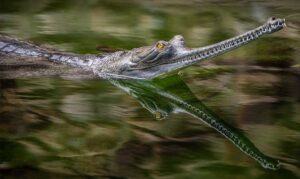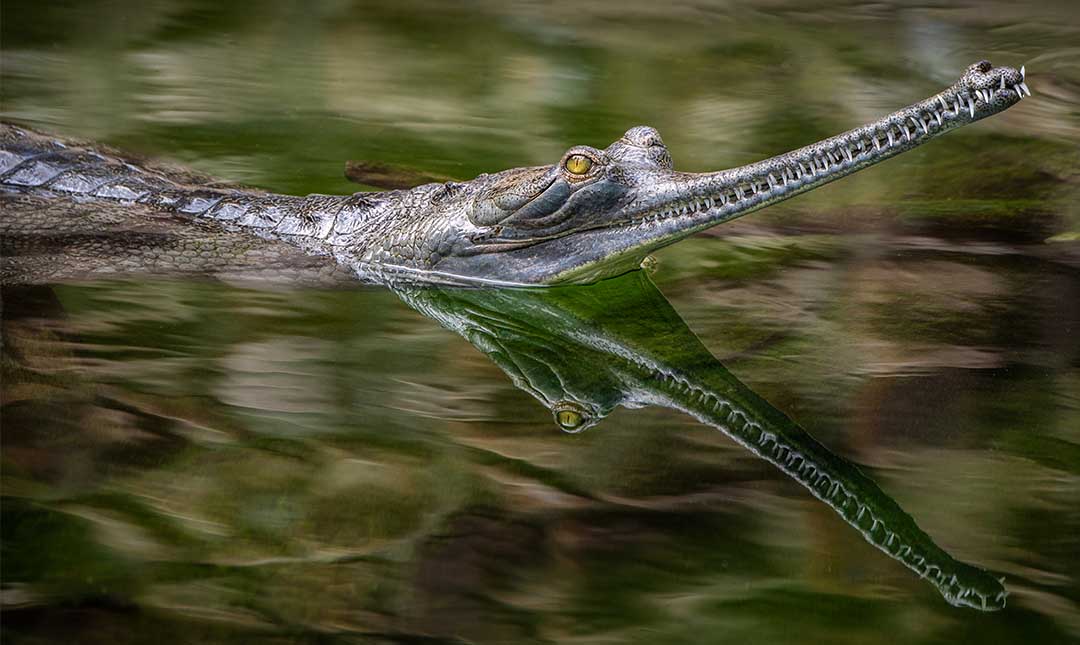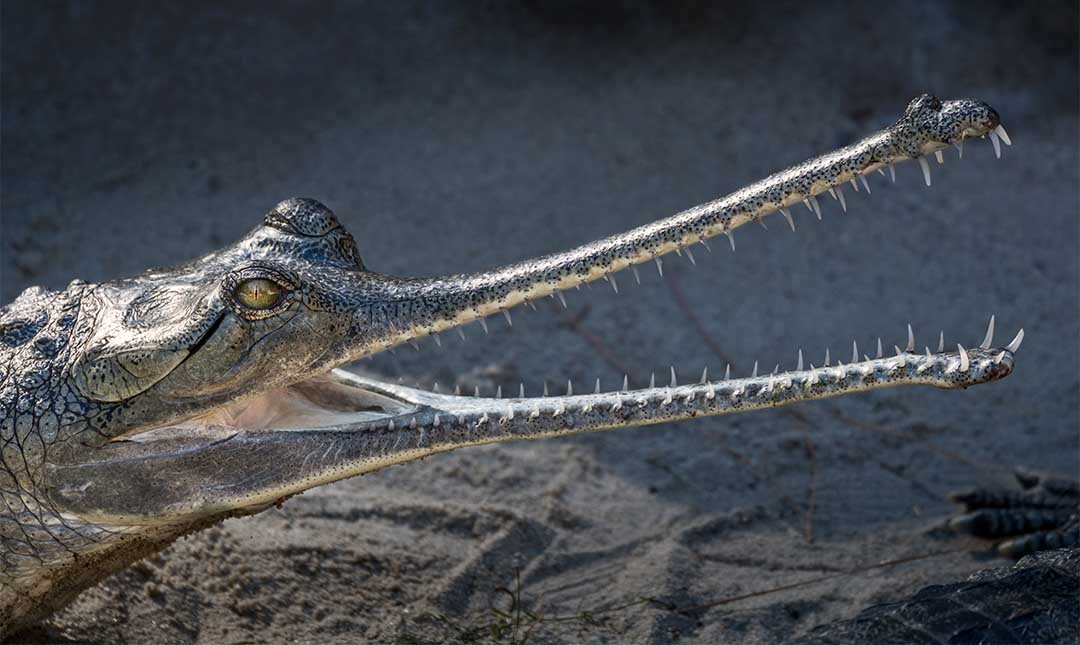About
The gharial is the only surviving member of a group of animals that arose in the Cretaceous period, about 144–65 million years ago. Among the most aquatic of the crocodilians, their broadly webbed feet and flat tails make them highly successful predators. With eyes, ears, and nostrils located on the top of their heads, they are able to hide submerged just below the surface of the water. With long, slender snouts armed with 110 razor sharp, interlocking teeth, gharials are specialists at catching fish.
Adult males develop a bulb-like growth on the tip of their snouts that are said to resemble a ghara, the Hindi word for a round earthen pot. This growth amplifies a humming or buzzing vocalization that can be heard from nearly a mile away and attracts females during the breeding season. It is also used to blow bubbles as part of the mating ritual. During breeding season, males become territorial and will spar, using their jaws like swords. Fights can last 30 minutes; the loser retreats to the water while the winner moves forward to court the females.


Habitat
Fragmented populations in slow moving rivers in northern India and Nepal.
Diet
Gharials feed primarily on fish, although they will also eat water birds.
Physical Characteristics
Among the largest of the crocodilians, female gharials can reach lengths of 10–13 feet and males 16–21 feet. Males can weigh up to 550 pounds. Lifespan in estimated at 50–60 years.
LOCATION WITHIN THE ZOO
You’ll find this animal in the pond outside the Desert LAIR. See Zoo Map.


